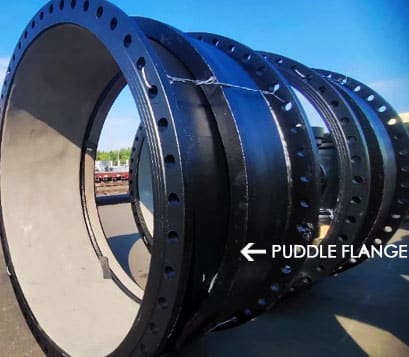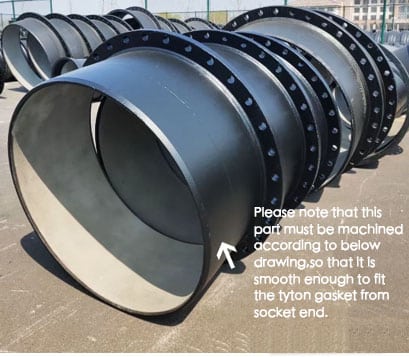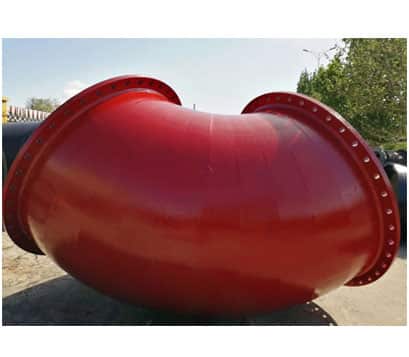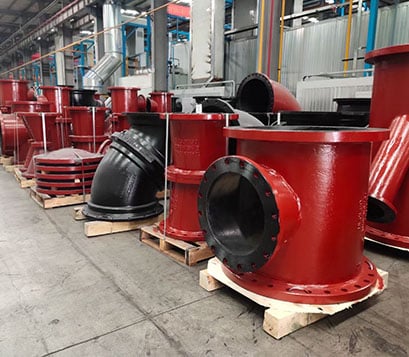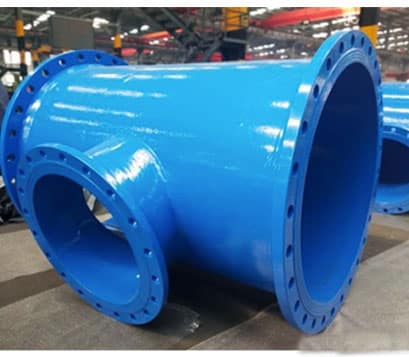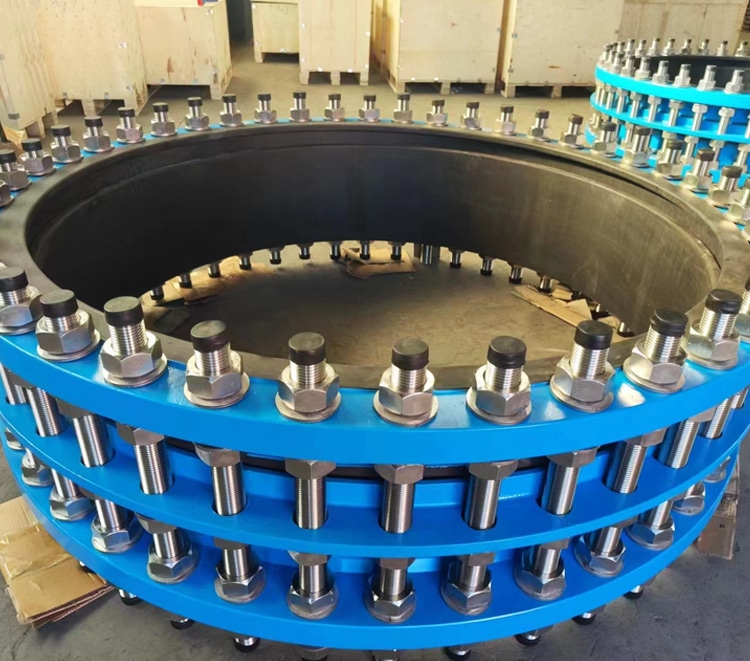Blank Flange
Blank flange, also known as a blind flange, is a type of flange used to close the end of a pipe or a valve. It is a solid disk with bolt holes around the perimeter and is used to block off a section of a pipe or valve, preventing flow through that section. Blank flanges are commonly used in pipelines, pressure vessels, and other industrial applications where flow needs to be stopped or redirected. They can be made from various materials, including ductile iron, stainless steel, carbon steel, and other alloys, depending on the specific application and requirements.
Judberd can offer below types ductile iron blank flange, if you need any of them, feel free to let us know.

EN545/ISO2531 Blank Flange
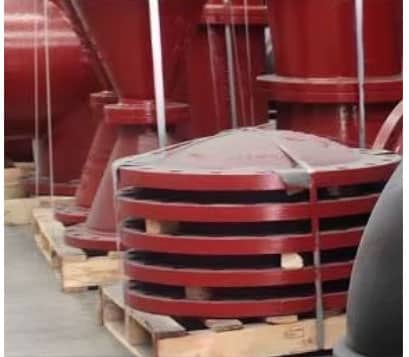
ANSI/AWWA C110 Blank Flange
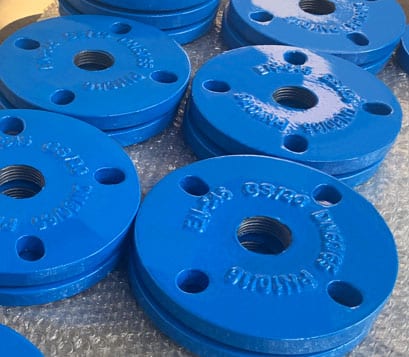
Blind Flange with Tap
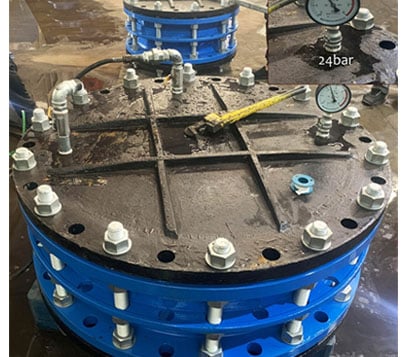
Blind Flange with Tapped Hole to Connect Pressure Gauge
Blank Flange Drawing
EN545/ISO2531 standard

Blank Flange Dimensions
EN545/ISO2531 standard
Blank flange needs to connect with the flange on the pipeline components, so the connection dimensions must be consistent with the flange to be connected.
| Nominal Diameter DN | blind flange weight Mass(kg) PN10 | blind flange weight Mass(kg) PN16 | blind flange weight Mass(kg) PN25 |
|---|---|---|---|
| 80 | 3.9 | 3.9 | 3.9 |
| 100 | 4.8 | 4.8 | 5.1 |
| 150 | 8.1 | 8.1 | 8.8 |
| 200 | 11.6 | 11.4 | 13.3 |
| 250 | 16.9 | 16.6 | 21 |
| 300 | 24 | 23.5 | 30 |
| 350 | 32.5 | 37 | 46.5 |
| 400 | 40.5 | 48.5 | 62.5 |
| 450 | 50 | 63.5 | 80.5 |
| 500 | 62 | 83 | 100 |
| 600 | 94 | 130 | 154 |
| 700 | 136 | 169 | / |
| 800 | 189 | 235 | / |
| 900 | 244 | 307 | / |
| 1000 | 309 | 413 | / |
| 1200 | 504 | 662 | / |
| 1400 | 739 | 993 | / |
| 1600 | 1239 | 1409 | / |
| 1800 | 1240 | 1858 | / |
| 2000 | 1630 | 2407 | / |
If you need drawing and dimension for ANSI/AWWA C110 Blank Flange ,consult Judberd.
Blank Flange Function
The main function of the blank flange is to close the end of the pipe to prevent the fluid from flowing. Specifically, it has the following uses:
Closure of the pipeline: The blank flange is used to close the end of the pipeline or stop the fluid flow in the pipeline, usually used when the system does not need to flow or maintain.
Inspection and maintenance: When the pipeline system needs to be inspected or maintained, the blank flange can safely isolate a part of the pipeline to prevent fluid leakage and safety hazards for maintenance personnel.
Pressure test: The blank flange can be used to pressure test the pipeline or equipment. By closing one end of the pipeline, the pressure resistance and sealing performance of the pipeline can be tested.
Flow control: In systems where flow control is required, the blank flange can be used to temporarily stop the flow to ensure the safety and stability of the system.
Expansion of the pipeline system: In the case where it may be necessary to expand or connect other pipelines in the future, the blank flange can temporarily close the port for future expansion or renovation.
The design and use of the blank flange need to consider the material, pressure rating, and sealing performance to ensure the reliability and safety of the blank flange under different conditions.
If you tap blind flange with thread ,then it have below more functions
A blind flange with a tap, or a tapped blind flange, has a threaded hole (or multiple holes) drilled into it. The functions of a tapped blind flange include:
Pressure Relief: The tap can be used to install a pressure relief valve or a bleed valve to safely release pressure from the system, preventing overpressure conditions.
Instrumentation Access: It allows for the installation of instrumentation such as pressure gauges, temperature sensors, or other monitoring devices. This enables continuous monitoring of the system’s parameters without needing to remove the flange.
Drainage or Venting: The tap can be used to attach a drain or vent line, which facilitates the removal of accumulated fluids or gases from the system, ensuring it operates efficiently and safely.
Sampling: In some applications, the tap allows for fluid sampling without interrupting the system’s operation, making it easier to conduct regular quality checks or contamination assessments.
Chemical Injection: It can provide a point for injecting chemicals or additives into the system, which is useful in processes requiring precise chemical dosing.
Using a tapped blind flange helps in maintaining the functionality of a sealed system while providing flexibility for various operational needs and safety measures.

